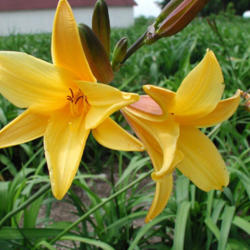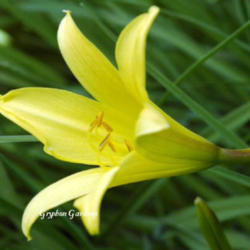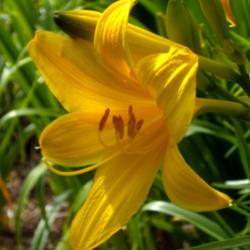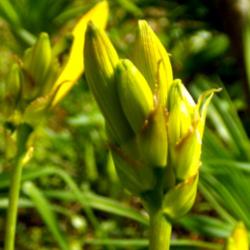It's so much easier to see different characteristics in the garden now. What was just a fleeting glance at things that seemed unusual, before, is now a growing familiarity. Each cultivar shows off its own unique set of attributes, not just in blooms, and some seem like echoes from their species origins.
I hope its okay to mix in some of how this book is bringing a new approach to experiencing a daylily garden - I don't mean to confuse anyone to the point of tears, but I do want to share some of what I now can see, as all of this is shown to us. Some of these photos are not species, though some are (they'll be noted, and come from the ATP database). This new kind of focused observation really seems to bring things to light in new and helpful ways.
Here are some buds looking like they may be sessile (finally, learning some new gardening vocabulary :D ), though I don't know if all buds start out like this. They do seem a bit farther along than others that are already well separated by longer stems.
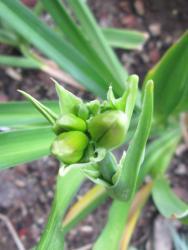
And, here are a couple that have some very long bracts. In a number of mine, the bracts are as long as the foliage! Maybe they are not so much "odd" as they are possibly an example of how extremes have been interbred through the ages?
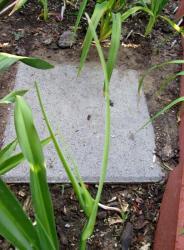
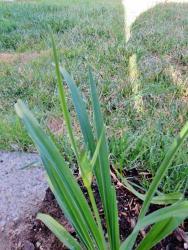
Finally, a couple of fuzzy pics (the new camera and I are not getting along very well yet! :P ) showing a bud that is starting to pick up some color at the edge of each segment, soon to spread across the cells to cover the sepals. And, another fuzzy one showing buds closer to bloom that have some interesting pattern of color-rings on the sepals (darkest at tip, then a little lighter, then much lighter, until the shading stops with another ring of darker color).


One of the things I like most about this book (
http://www.telmarcgardens.com/...) is the progression of how, and why, we can distinguish the species plants. First, they differ by blooming times, as this occurs in a natural rhythm to each daylily species ... those that bloom in earliest spring would not in nature be pollinated by those that bloom late in the season, so there is a really basic division between them there. And that is where this first set is grouped, earliest-blooming daylily species, as is so nicely shown in Chapter 2. I often need to review a chapter, sometimes reading it a few times, before all of the details start to sink in and the new terminology and ideas becomes more familiar.

So, it's making a lot of sense that we first start out by being shown that earliest-blooming group of: H minor, H middendorffi, and H dumorterii. Then we are shown what a deeper look reveals about how those three differ from each other.
This is likely H dumortieri, showing the buds and sepals with reddish-brownish coloring on the outside, but a clear yellow-gold on the inside sepal surface.
Then there is H minor. It is the lightest yellow of the three, with no dark color on the outside of the sepals. A nocturnal bloomer, it is also quite fragrant. Its very thin grass-like foliage can be seen against the backdrop of the wider leaves of its neighboring cultivars.
Species H middendorfii has flowers that open a bit wider than either of the other two, and it has a bit more of an orange-y tinge. Also shown is a photo of its sessile buds:





